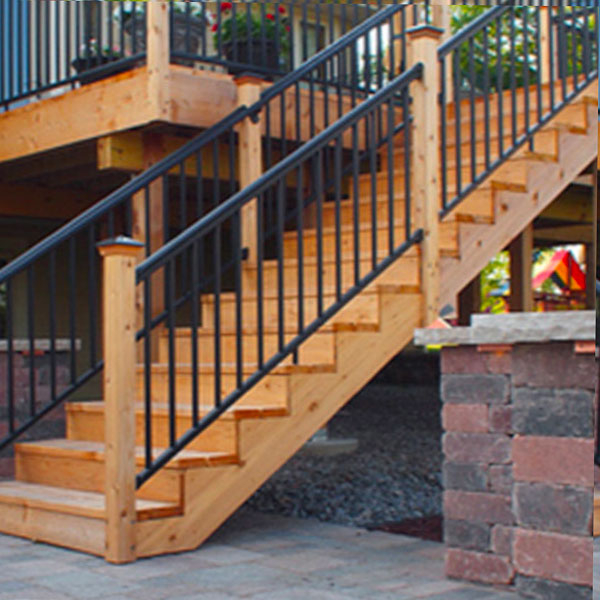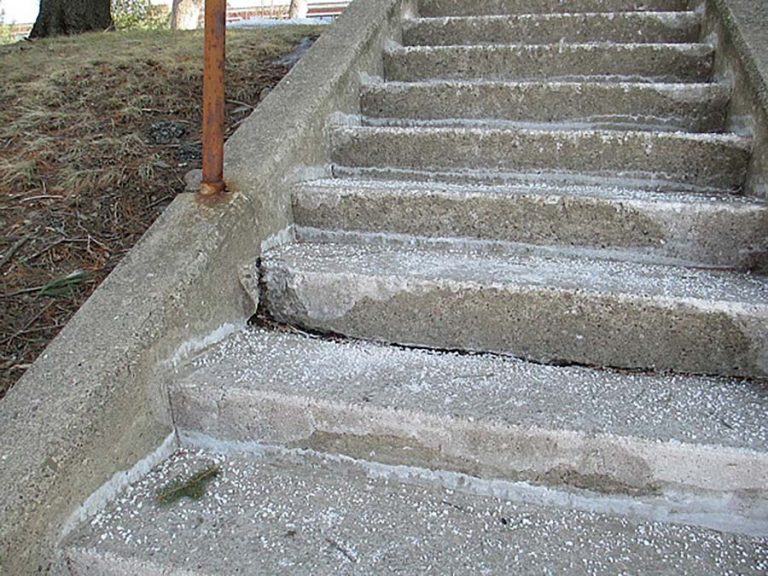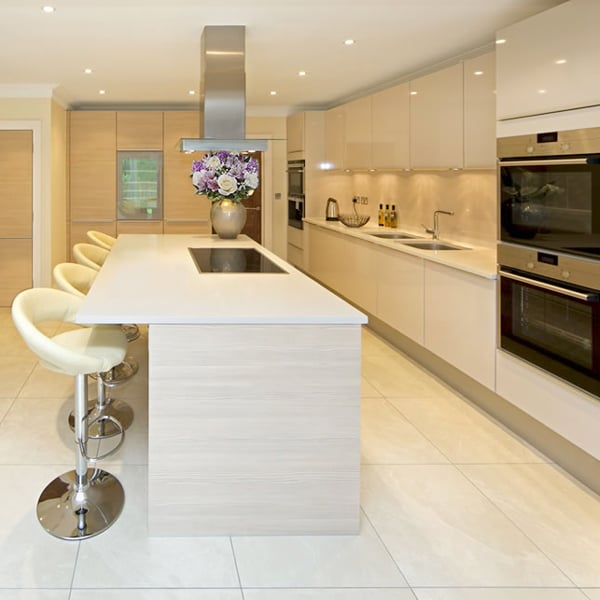SLIP & FALL PROBLEMS ON SPECIFIC BUILDING MATERIALS
The materials that make up our stairs, porches, decks and floors can make a big difference in the potential risk of a slip and fall. Natural wood, synthetic wood, concrete and ceramic tile can all be safe building materials depending on how, where and when they’re used. In this section, we evaluate the slip-and-fall risks of the most popular building products and offer our recommendation on how to maximize traction in almost any environmental condition.
NATURAL WOOD
Natural wood is the most widely used structural material in residential applications for floors and stairs. Inside the home you will find hardwoods, like oak and maple, with a smooth polyurethane or enamel finish. Outside the home it’s common to find relatively inexpensive pressure-treated pine, or the more expensive cedar, redwood, teak and other rot-resistant woods used in decks, patios and stairs.
CONCRETE
Concrete is a favored material for its strength and durability and is widely used in both residential and commercial construction. When used out of doors, the aggregate used in unfinished concrete provides good traction in all but icy and snowy conditions. When used inside, concrete is often polished and finished with an elastomeric paint or sealer that looks beautiful but can be slippery when oil or water lay on the surface.
CERAMIC TILE
Ceramic tile is often used in spaces where water is present, such as bathrooms, kitchens, laundry, and utility rooms. The impermeable ceramic finish makes clean up a breeze, but also causes problems as water sits on the surface of the tile for a long time. Depending on the finish of the ceramic tile, it can be quite slippery when wet. If you have specific questions about a building material in your home or business that you’d like to make just a bit less hazardous, contact Handi-Tread’s Stop-the-Slip specialists for advice and recommendations.
